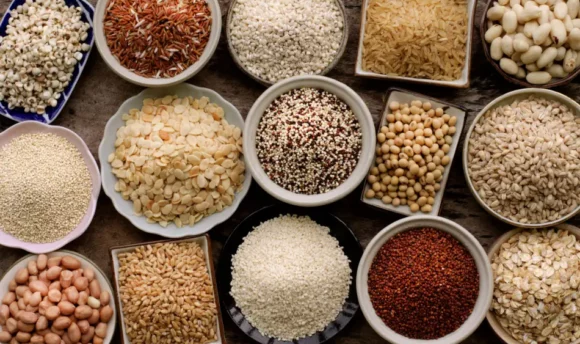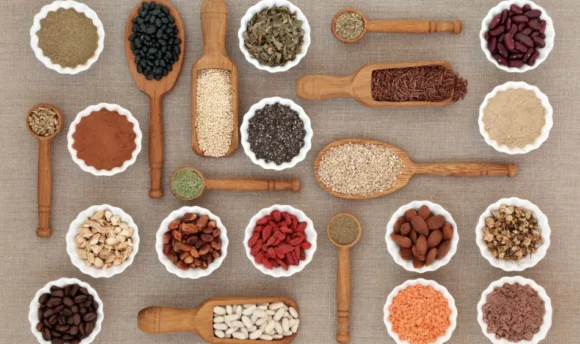Is Salmon Skin Good for You, and Is It Safe to Eat?
If you are a seafood lover who enjoys the delicious taste of salmon, you may wonder if salmon skin is safe. Find out what the nutritional benefits of salmon skin are and whether it can be a healthy addition to your diet.

Salmon is one of the most popular fish choices for most Americans, thanks to its tasty flavor and nutritional benefits. According to the Food and Drug Administration (FDA), you should eat fatty fish like salmon two to three times a week because of its many health benefits. But is it safe to eat salmon skin?
When it comes to whether or not to eat the crispy skin of salmon, it can be challenging to make up your mind.
This article examines the health benefits and potential risks of eating salmon skin and provides a healthy salmon skin recipe you can try today.
Is Salmon Skin Good for You?
Yes, salmon skin is healthy because it is a good source of omega-3 fatty acids, which the human body can only get from the diet. The fatty acids improve heart health, reduce inflammation, and boost brain function.
It also contains protein, vitamins, and minerals, including vitamin D, niacin, selenium, and phosphorus. However, due to the possible level of toxins in the salmon skin, you should consume it in moderation.
Can You Eat Salmon Skin?
Salmon skin is generally safe to eat for most people as long as it is properly cooked. Just like salmon, the skin contains essential nutrients and a high concentration of omega-3 fatty acids, which offer numerous health benefits.
Note: The toxins accumulate in their skin, making it harmful to the human body, particularly for pregnant women. Therefore, always check the source of the salmon before you consume it.
Health Benefits of Salmon Skin
By now, we agree that salmon skin is nutritious. Here are five health benefits of eating the skin.
#1 Supports heart health
Salmon’s skin is low in saturated fats and cholesterol and has a high concentration of omega-3 fatty acids, which are beneficial for heart health.
According to the Mayo Clinic, omega-3 fatty acids may lower blood pressure and protect against irregular heartbeat and the formation of blood clots that may increase the risk of heart attacks. Moreover, people who eat fish at least twice a week have a lower risk of dying from heart disease.
#2 Better brain function
Omega-3 fatty acids in salmon skin support brain health. They protect the brain from age-related degeneration and improve memory and cognitive function. Research suggests that regular consumption of oily fish rich in omega-3 fatty acids can reduce the risk of developing neurological disorders like Alzheimer’s disease.
#3 Improves skin health
Salmon skin contains natural collagen, a protein essential for maintaining healthy skin. Collagen improves skin elasticity, reduces the signs of aging, and promotes healthy hair and nails. In addition, omega-3 fats have anti-inflammatory properties, maintain healthy skin, and can fasten wound healing.
#4 Promotes eye health
Again, the fatty acids in salmon skin are beneficial for visual acuity. These fatty acids maintain eye health and prevent dry eyes or age-related poor eyesight.
#5 Good source of protein and aids in weight loss
Salmon skin is a good source of protein that keeps you feeling full for longer periods, making it an excellent addition to a weight loss diet. It is a great alternative to red meat because it is low in saturated fats. Moreover, due to its high omega-3 fatty acid content, it helps to boost metabolism, propel fat burning, and reduce the occurrence of non-alcoholic fatty liver.
Possible Side Effects of Salmon Skin
Although salmon skin is generally safe to eat and offers numerous health benefits, here are some potential risks you should be aware of.
#1 Exposure to contaminants
Salmon, like other fish, may be exposed to environmental pollutants such as polychlorinated biphenyls (PCBs), which accumulate in the skin and increase the risk of health problems such as brain diseases and damage to the nervous system. PCBs also have a carcinogenic effect and may increase the risk of cancer and birth defects.
The source of the salmon skin can determine the level of human exposure. In particular, skin from farmed Atlantic salmon is the most contaminated than wild-caught salmon, which is less contaminated.
#2 Risk of allergies
Some people may experience allergic reactions after eating salmon skin. The reactions could be mild, with symptoms such as rashes, swelling, or hives, and severe reactions, such as difficulty breathing or anaphylaxis.
Healthy Salmon “Bacon” Recipe
Use the salmon skin to make gluten-free salmon bacon in under 10 minutes. Enjoy as a tasty snack or add to a sandwich or salad topping.
Ingredients
- Salmon skin from 2 raw salmon filets
- Salt to taste, optional
- 1 tsp garlic powder
- Juice from one lemon, optional
Directions
- Remove the scales from the raw salmon skin. Then, cut the salmon skin off the salmon filet and scrape off any extra fat or meat inside the skin with a sharp knife.
- Chop the skin into thin strips, then season with salt and garlic powder.
- If you have cooked salmon, separate the skin from the salmon meat, and remove excess meat. Season with salt if needed, then slice into thin strips that will be easy to flip in a skillet.
- Preheat a non-stick skillet over medium heat. Add salmon skin strips to the skillet with the skin side up. Cook salmon skin for a few minutes over medium-low heat while pressing down with a spatula to ensure all parts crisp up evenly.
- Flip the strips, then cook the other side for a few minutes and press down to ensure it is crisp. Be careful to avoid burning the salmon skin.
- Remove from heat and set aside to cool on a plate with a paper towel to get a crispy salmon skin. Serve warm and garnish with lemon juice.
It is no secret that diet contributes 80% to a healthy weight. If you are looking for personalized nutrition guidance and meal plans, check out these best nutrition apps with a large database of healthy recipes based on your dietary references.
A Word From a Nutritionist
Salmon skin is a good source of healthy fats such as omega-3 fatty acids, which are beneficial for brain and heart health. In addition, it is a rich source of proteins and essential vitamins and minerals. However, eating salmon with the skin may increase exposure to contaminants such as PCB.
Salmon skin can be eaten in moderation because the benefits outweigh the risks. To reduce their exposure to harmful toxins, pregnant and breastfeeding women, as well as children, should limit their intake of contaminated seafood.
Ensure you select high-quality salmon from non-contaminated water and cook the salmon skin properly to avoid any other health issues associated with undercooked foods.
Overall, you can eat salmon skin in moderation as part of a healthy diet.
Conclusion
Salmon skin is nutritious because it contains omega-3 fatty acids, proteins, and other essential vitamins and minerals that are beneficial for health.
Although the benefits of eating salmon skin outweigh the side effects for most people, if you are pregnant or breastfeeding, you should avoid salmon to reduce your risk of exposure to harmful pollutants.
You can eat salmon skin in moderation and ensure that you select wild salmon instead of farmed salmon from the local fish market.

















































 Select your language:
Select your language: 







